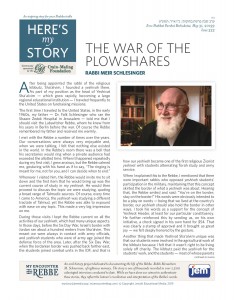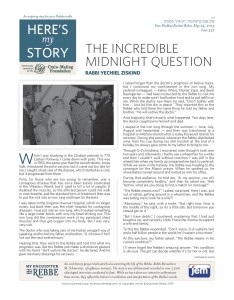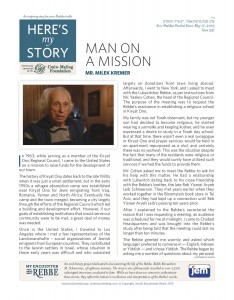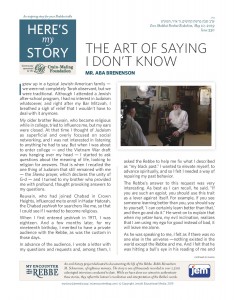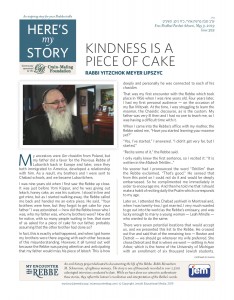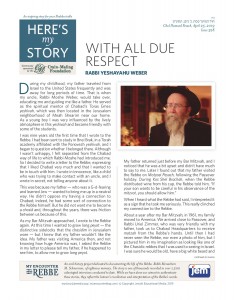The War of the Plowshares
After being appointed the rabbi of the religious kibbutz, Sha’alvim, I founded a yeshivah there. As part of my position as the head of Yeshivat Sha’alvim – which grew rapidly, becoming a large regional educational institution – I traveled frequently to the United States on fundraising missions.
The first time I traveled to the United States, in the early 1960s, my father – Dr. Falk Schlesinger who ran the Shaare Zedek Hospital in Jerusalem – told me that I should visit the Lubavitcher Rebbe, whom he knew from his years in Berlin before the war. Of course the Rebbe remembered my father and received me warmly.
I met with the Rebbe a number of times over the years. Our conversations were always very enjoyable and, when we were talking, I felt that nothing else existed in the world. In the Rebbe’s room there was a bell that his secretaries would ring when a private audience had exceeded the allotted time. When it happened repeatedly during my first visit, I grew anxious, but the Rebbe calmed me, gesturing with his hand as if to say, “The ringing is meant for me, not for you, and I can decide when to end.”
Whenever I visited him, the Rebbe would invite me to sit down and the first item that he would bring up was the current course of study in my yeshivah. He would then proceed to discuss the topic we were studying, quoting a broad range of Talmudic sources. Of course, every time I came to America, the yeshivah was studying a different tractate of Talmud, yet the Rebbe was able to expound with ease on any topic. This made a very big impression on me. (more…)


